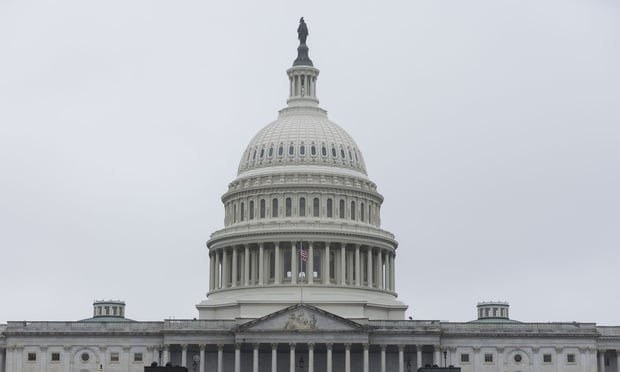Millennials are not the only generation to prioritize cost in considering workplace health benefits.
In Xerox’s 2016 HealthCare Attitudes Survey, nearly 60 percent of Generation Xers said that, come enrollment season, cost is their top concern. That’s roughly equal to the percentage of millennials who said the same.
More than any other generation, Gen Xers overwhelmingly said they were likely to shop around for carriers and health care providers. And nearly half of Gen Xers said they have delayed treatment to avoid out-of-pocket costs – a percentage nearly equal to younger millennials, who tend to earn less money and carry a higher debt-to-income ratio.
When developing voluntary benefits education and offerings for Gen Xers, it is incumbent upon benefit brokers to understand the larger financial complexities this demographic faces.
The bottom line is that Gen Xers - -the oldest of whom have already hit 50 – is, by many measures, more financially strained than either millennials or baby boomers.
- Most were in the workforce by the time the technology bubble burst in 2000; their household balance sheets were hit hardest when the real estate market crashed in 2008.
- As a cohort, they have more spenders than savers, compared with their younger and older counterparts, and they are the least likely of all the generations to have more savings than debt.
- For all of the attention given to millennial college debt, would you believe that Gen Xers actually carry more of it? And as boomers continue to retire, the oldest Gen Xers are reaching a point when retirement planning delays could have dire consequences.
- They also bear the distinction of being the Sandwich Generation — in other words, many Gen Xers will be financing some portion of their childrens’ higher education while also serving as caretakers for their aging parents.
This complex financial picture explains why more Gen Xers are gravitating to consumer driven health care plans. Healthy Gen Xers who can scale back unnecessary coverage and lower the cost of traditional core medical plans show a great willingness to do so. BenefitFocus, a provider of cloud-based benefit administration platforms, found that, when given the choice, more than four in 10 Gen Xers chooses a high-deductible plan over a traditional plan -- a rate roughly equal to that of millennials.
Here are four facts that benefits brokers can consider when designing voluntary offerings for Gen X workers who need them.
[Click through to read our 4 facts about Gen X workers using the navigation below.]
1) The majority of Gen Xers who need life insurance don’t have it
Millions of Gen Xers know they aren’t carrying enough life insurance. Their kids are growing older, and they themselves are approaching or already in middle age. They have families and assets to protect. They are old enough to be more prone to life-threatening illness, but still young enough to be attractive to underwriters. When incorporated into a targeted voluntary benefits strategy, life insurance premiums can have a very accessible price tag.
In a LIMRA study last year, 56 percent of Gen Xers admitted to being underinsured when it comes to life insurance, but only 20 percent said they were very likely to buy the protection that most financial experts say is essential for workers in their 40s and early 50s with families.
Voluntary life insurance has high levels of participant penetration, yet many Gen Xers continue to go without it. It’s important, then, for brokers to highlight the essentials of carrying life insurance.
2) Gen Xers could benefit from financial wellness programs
Gen Xers are, by far, the most indebted generation. According to the credit reporting agency Experian, the average Gen Xer has $125,000 in debt – including mortgages; credit cards; and auto, student, and personal loans. That’s more than double the debt load of the average millennial, and about 40 percent more than a baby boomer’s average debt of $87,000.
In 2012, data from the Federal Reserve Bank of New York showed that workers in their 30s held $321 billion in student debt -- nearly three times as much as in 2005 -- and workers in their 40s held $168 billion -- three times more than in 2005.
What’s more, by some measurements, Gen Xers hold the highest levels of student debt. Online credit management system provider Credit Sesame says that, among its clientele, average Gen X college debt is about $32,600, compared with it millennial members’ average, which is about $24,000.
Turnkey financial wellness programs offered by benefit providers and independent third-party providers have emerged as a tool to help employees manage debt burdens. Their proponents range from economists to regulators and lawmakers. And more large employers are buying in.
These programs play an important role in the financial life of all generations, say advocates. The Consumer Financial Protection Bureau (CFPB), a regulatory body created by the 2010 Dodd-Frank law, has studied the efficacy of worksite financial wellness programs. The regulators say results are still preliminary since the product is still in the early stages of its lifecycle, but evidence shows that financial wellness programs can create a more “satisfied, engaged and productive” workforce, according to a 2014 CFPB study.
CFPB notes that 20 percent of all workers admitted they skipped work to deal with a financial problem. Among Gen Xers, “stress levels are even higher,” says CFPB. As they enter their peak earnings years, nearly one in three Gen Xers said personal finances distract them at work. And more than half reported high levels of stress in dealing with personal finances.
“Gen Xers may have more difficulty than other generations finding security in the future,” says CFPB
Before brokers start advocating for financial wellness programs, it’s important to first know what the market has to offer. Many carriers with voluntary benefits have developed worksite wellness programs. Other providers have independently developed products.
3) Quality of worksite benefits a strong determinant of where Gen Xers work
About 80 percent of Gen Xers say the quality of health benefit offerings are a leading determinant in deciding where to work, according to a recent poll conducted by Collective Health.
Yet while they value comprehensive benefits solutions, many are confused over how to build the best benefits strategy. In the same poll, 70 percent of respondents (many of which are in Generation X) with children under the age of 18 report being overwhelmed by the growing breadth of available benefits options, underscoring the need for a strategic broker and communication tailored to Gen Xers specific needs.
4) Vision, dental, critical illness
For Gen Xers, the value of a consumer driven health care plan will, of course, depend on each individual’s and family’s circumstances. Employers offering a CDHP can improve their top line while providing a solution to workers’ financial challenges – particularly when those workers are healthy.
By lowering major medical premiums and supplementing with affordable voluntary and ancillary coverage for vision, dental, disability and critical illness, employers can help their workers free up cash to address debt or contribute more to a 401(k) plan. But a sensible strategy must not leave workers exposed to unseen out-of-pocket medical costs. Simply shifting the health care budget to address other sources of financial stress will only compound the problem if Gen Xers and their families lack adequate gap coverage.
Many, if not lost Gen Xers, need help striking the appropriate balance. More employers today understand that -- and their awareness will only grow as workers in their 30s, 40s and early 50s move into management themselves.
© Touchpoint Markets, All Rights Reserved. Request academic re-use from www.copyright.com. All other uses, submit a request to [email protected]. For more inforrmation visit Asset & Logo Licensing.







